Change assessment data gives you excellent insight into how to shape your Change Management projects so that they are structured for success.
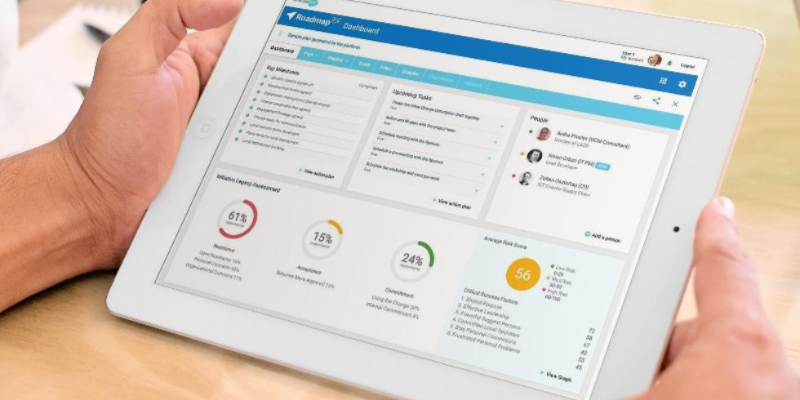
Using assessments early in change projects uncovers potential people risks that you can then plan for and mitigate well ahead of time. And ongoing assessments throughout the lifetime of your project or change initiative gives you the real-time data you need to help you identify where you need to spend more or less, time and effort during the change.
But how do you take a strategic approach to building data into your Change delivery strategy?
We think there are 6 things to bear in mind as you set this up:
1. Turn data into actions
Over the last few weeks, we have been looking at how to use two change assessment tools (which are available in our Roadmap Pro platform) early in your change planning process. The CIA (Change Impact Assessment) and the ILA (Initiative Legacy Assessment):
- The CIA measures and compares how difficult it might be for different individuals and groups to adapt to the upcoming change.
- The ILA provides you with an understanding of the key implementation challenges based on the legacy of change implementation done in the past
Each change assessment tool provides data on key risk dimensions and allows you to understand the highest people-related risks for your change.

(Example from the Initiative Legacy Assessment)
So what is the benefit of gathering this type of data?
Once you have collected the data, analysed it and identified your top risks It enables you to create a plan for addressing the specific risks - with an action-focused plan that is based on real-time data. Enabling you and other change leaders in your organisation to drive through change that really 'sticks'.
Remember, that successful change requires people in your organisation to move through the change cycle to become committed to that change. You will never get 100% commitment, but through proactive planning of actions to overcome your people risks, you have the ability to create a high degree of commitment to the change.
2. Define actions in your engagement process
A powerful engagement process is specific for each organisational change.
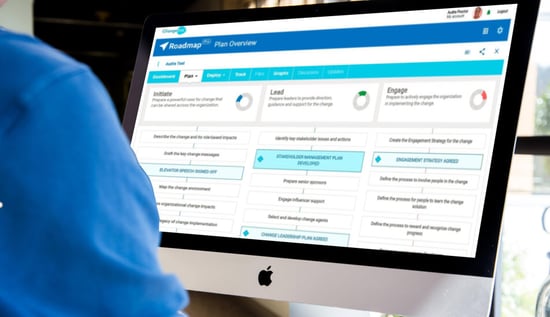
Think about the specific actions you will undertake to reduce the people risks you have identified.
3. Reduce risks through involvement
Dig into what your assessment results are telling you. Who are your high-risk people/teams? People feeling the greatest impact and the greatest loss of control are candidates for getting involved in the change as early as possible to gain buy-in. People are more likely to support and commit to something they have a hand in creating.
Consider whether you can involve people in the following activities:
- Problem or Opportunity Assessment
- High-level Vision and Solution Design
- Detailed Solution Development
- Organisational level/strategic implementation planning
- Local-level/tactical implementation planning and deployment
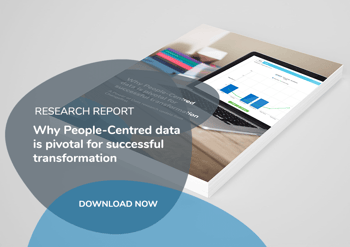
4. Focus your learning strategy
What does your assessment say about Change Management learning, or training in the organisation? Has it been successfully managed within changes in the past? Often learning actions are either run too late or too soon in the change process or even target the wrong skills.
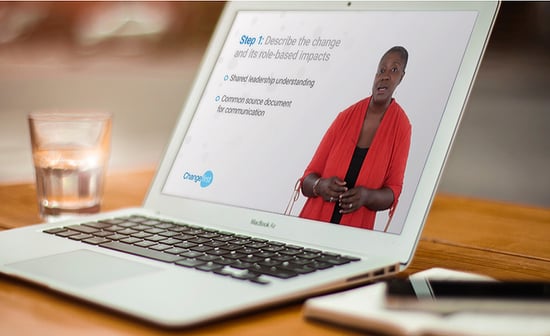
A poor learning process can actually increase anxiety around change and risks increasing resistance.
Consider your assessment results around how people feel about their learning needs and where they are. And develop a learning approach that uses the right mix of methods - from virtual workshops, to on-demand learning and classroom or coaching driven approaches) and targets the right skills (technical knowledge vs behavior or value changes).
5. Craft communications to minimise risk
Consider what your high-risk dimensions are telling you about what communication you need to build into your engagement process. Remember, communication is not just one-way, and it is certainly not just emails or presentation slides.
- How visible have the executives and the sponsors been in the past? Are they ready to be visible around this change?
- What types of communication methods work well in the organisation? Are there already two-way communication mechanisms in place that you can use (Q&A sessions or brown paper lunches, for example), or do you need to establish your own?
- Is there trust between the people in the organisation and their leaders? Their line managers? Is this a risk area you need to reduce, or are there strong trust relationships already in place that will help your communication?
There is never a one-size-fits all communication strategy. Our own Communications Effectiveness Assessment enables you to really drill down into what the specific communications needs are, not only for your organisation but for specific impacted groups too.
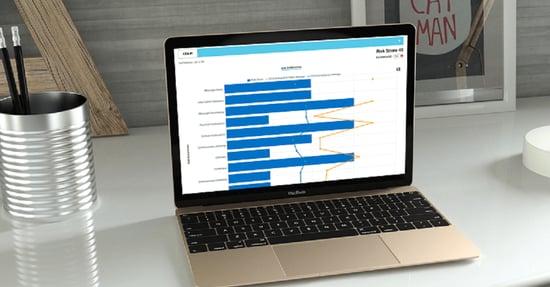
Use your assessment results to think about what communication you need, who you need it from, when you need it and who it is targeting. Different groups in the organisation, with different risk profiles will need different communication approaches.
6. Review your risks and focus your organisational Change Management activities
The specific actions you undertake to reduce people-risks will differ for each and every organisational change. Learning from others, and understanding what works across different change types and organisations is powerful knowledge to have. This knowledge allows you to shape the right approach to reduce your people risks.
So it is essential to create effective dashboards for change that enable you to communicate progress with a wide range of internal stakeholders.
If you are interested in a Change Management platform that helps you to do this then visit our website to learn more about Roadmap Pro.
|
Download a copy of our latest Change Research Gathering and assessing data around change is in our DNA at Changefirst. In our latest research update, we take a look at what more than 55,000 people and 900,000 data points can tell us about the current state of successful change implementation.
|
 |

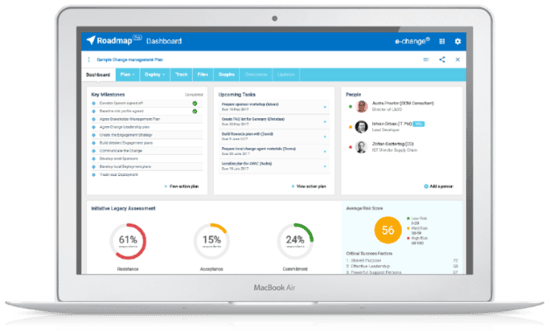


Leave a comment